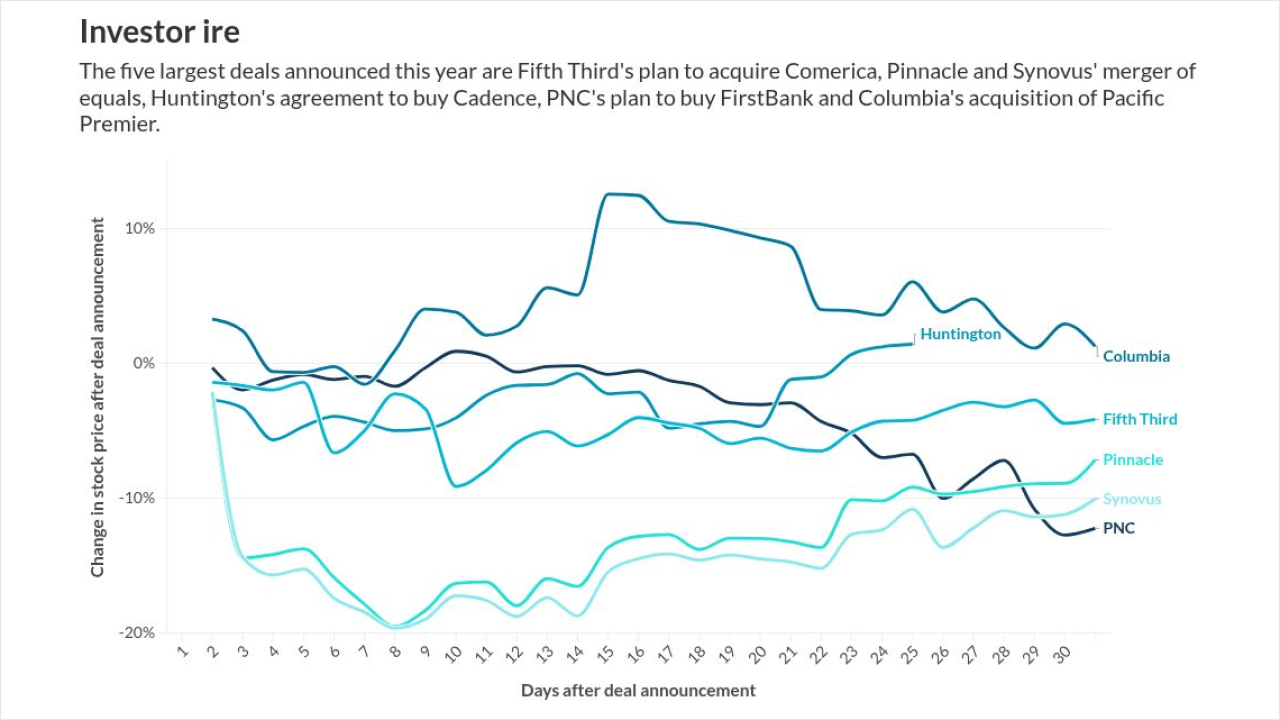
- Key Insight: Fed Gov. Michael Barr raised concerns about the GENIUS Act, commenting during a speech that strong guardrails and consumer protections are necessary to make stablecoins secure.
- Expert Quote: "Regulators have a lot of work to do to implement the act," said Fed Gov. Barr.
- What's at stake: Federal and state regulators have been tasked with setting stablecoin rules, including for nonbank issuers in the market.
Federal Reserve Governor Michael Barr is calling for stronger guardrails around stablecoins, pointing to "gaps" in the recently passed GENIUS Act, which created a regulatory framework for digital assets.
Barr, speaking at DC Fintech Week Thursday, said strong oversight mechanisms and consumer protections are needed for stablecoins to become a more viable payment instrument, requiring "additional work" from federal and state regulators.
Specifically, the former Fed vice chair for supervision pointed to the importance of tighter control over reserve assets, capital and liquidity requirements and consumer protections.
"The GENIUS Act provides a helpful statutory framework," said Barr. "But it will be up to both the federal banking agencies and the states to coordinate and develop a comprehensive set of rules that can fill in important gaps and ensure that there are robust guardrails to protect users of stablecoins and mitigate broader risks to the financial system."
Under the stablecoin bill, signed into law by President Donald Trump in July, federally insured depository institutions
During his speech Thursday, Barr flagged potential vulnerabilities in the act associated with permitted reserves that back stablecoins, including the use of uninsured deposits and any medium of exchange authorized by a foreign government, which could include cryptocurrencies. He pointed to the risk of cryptocurrencies dropping sharply in value, "potentially compromising the one-to-one backing of the stablecoin liabilities."
Barr also raised concerns about the bill allowing stablecoin issuers tied to banks to be involved in a broad range of activities without being subject to
"Appropriate capital requirements are another area where coordination among federal and state regulators is key — and it may be facilitated by the GENIUS Act's framework for assessing that state requirements are 'substantially similar' to federal requirements," he commented.
Barr also said there are gaps in consumer protections in the act because it lacks clarity on what constitutes a stablecoin and therefore does not require the kinds of fraud protections expected of traditional payment instruments.
"As I said at the outset, stablecoins have the potential to improve the efficiency of the payment system, particularly in cross-border applications," said Barr. "For stablecoins to reach their potential, additional work is needed to create guardrails that protect households and businesses, and the financial system as a whole."
Many aspects of the GENIUS Act will be phased in through the next three years, during which time regulators will have to establish rules for banks. Specifically, regulators will need to address





